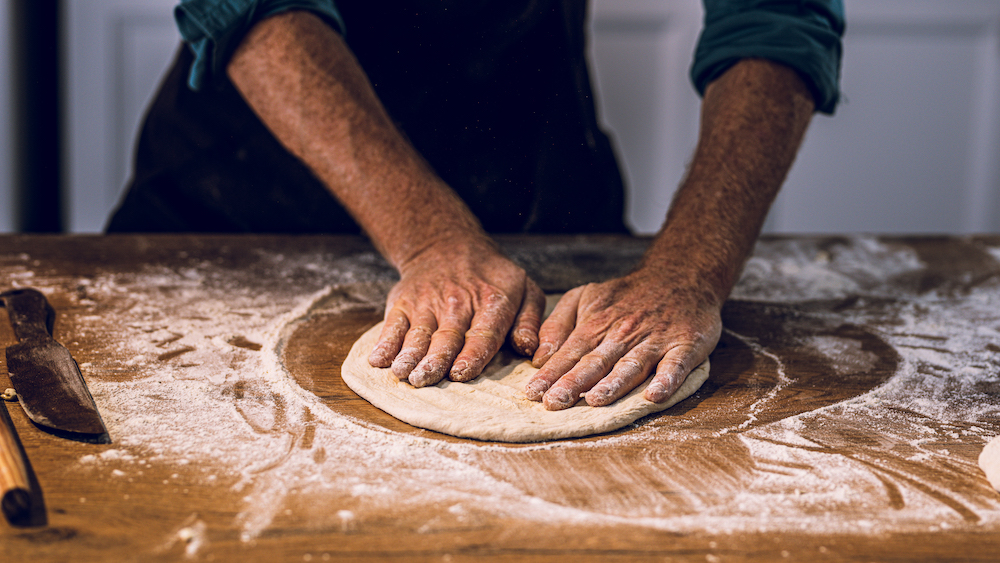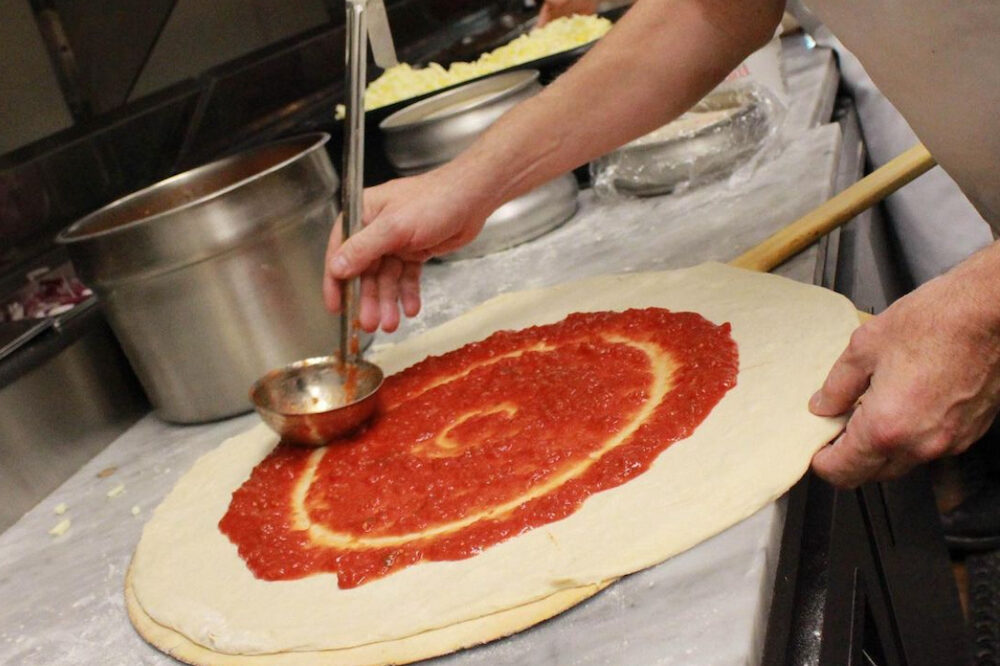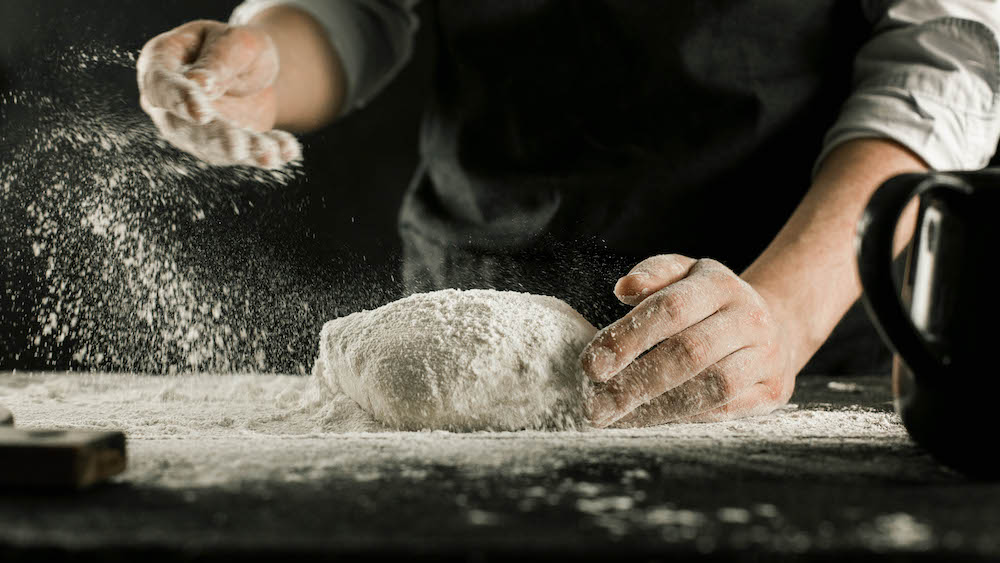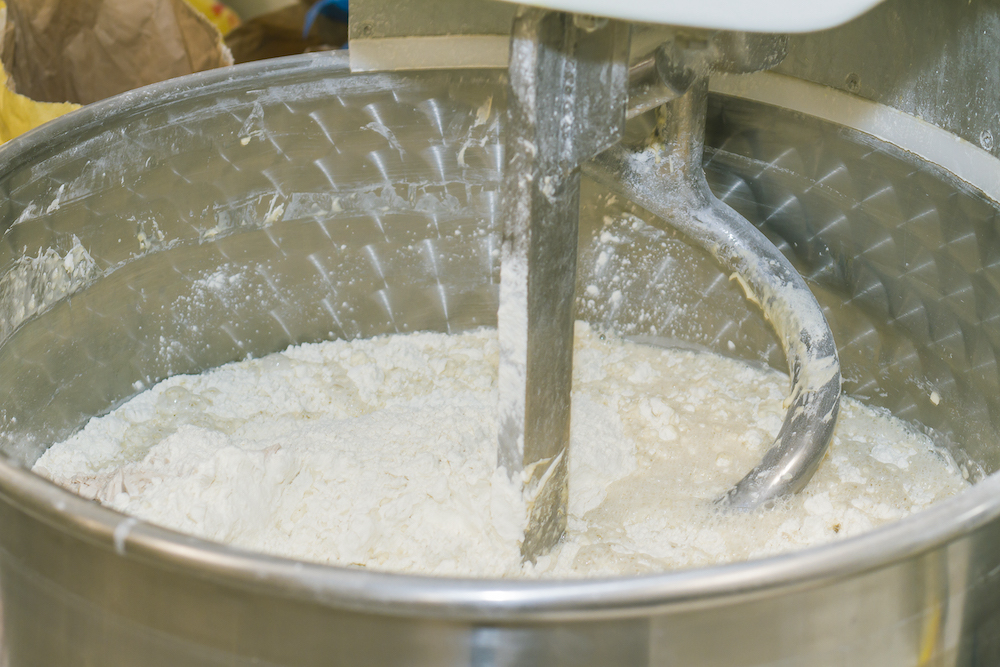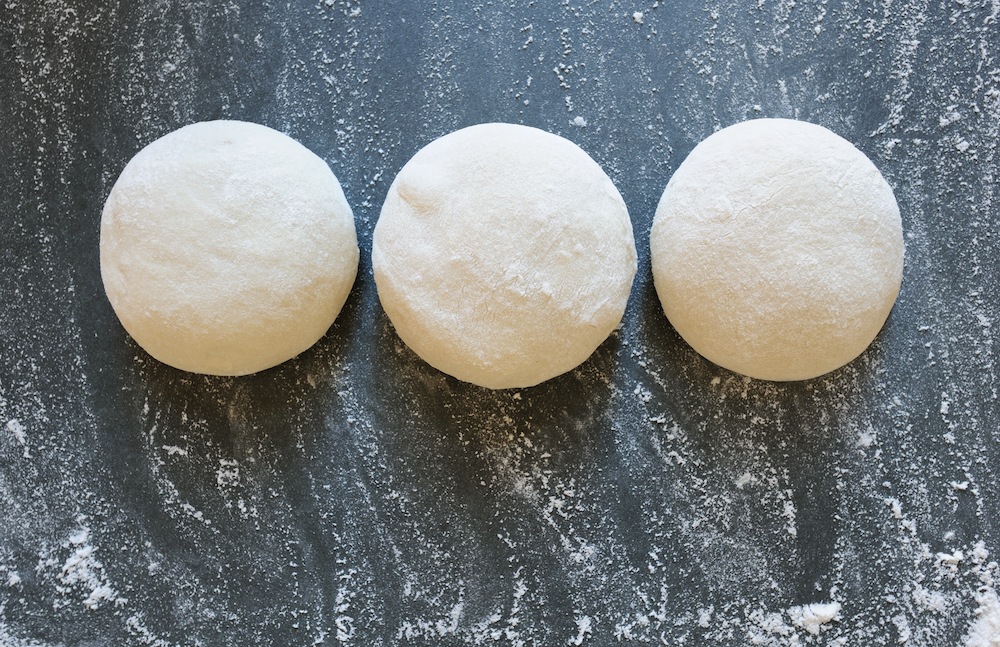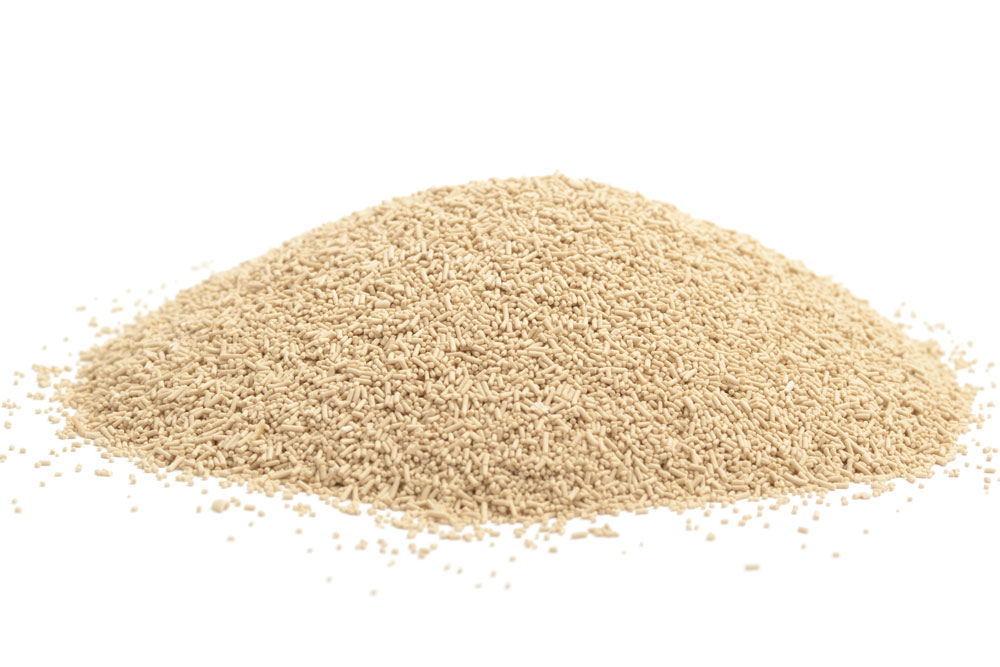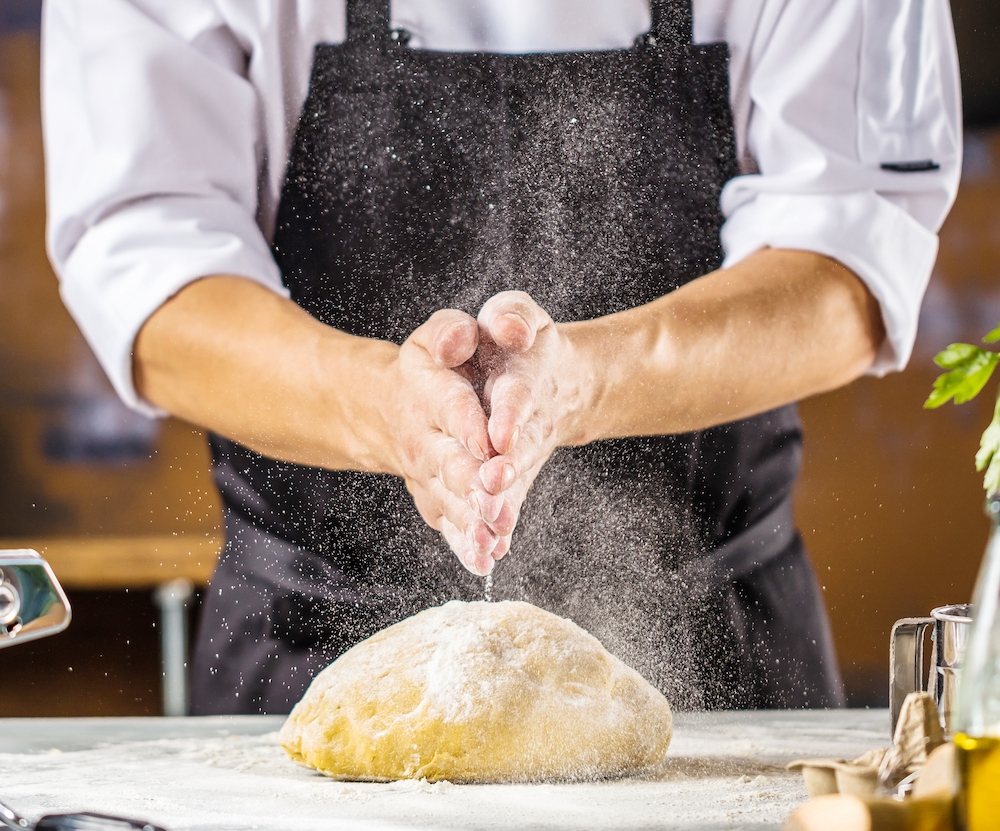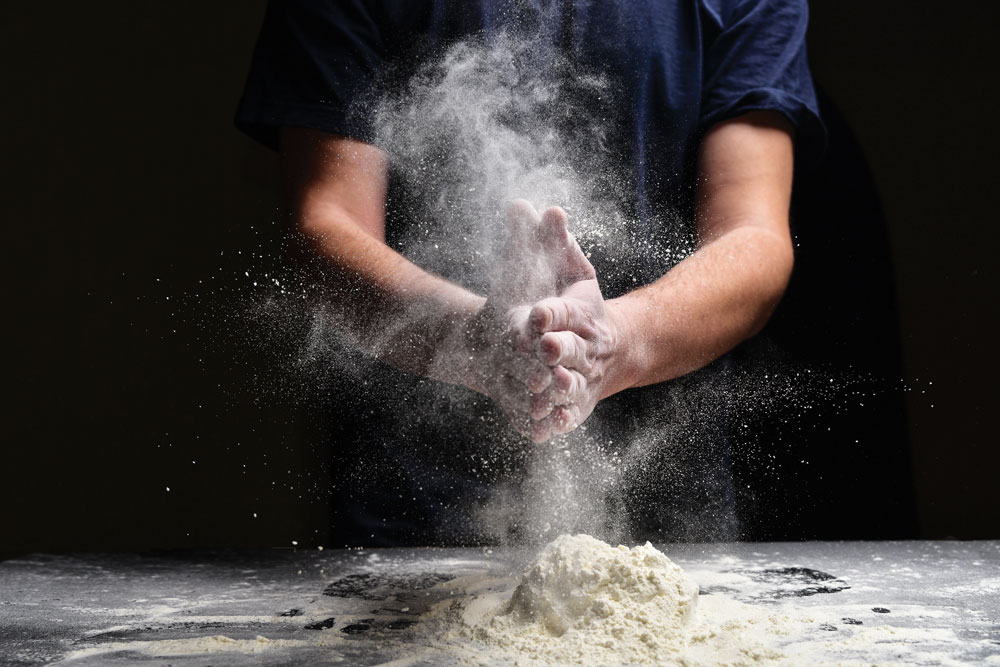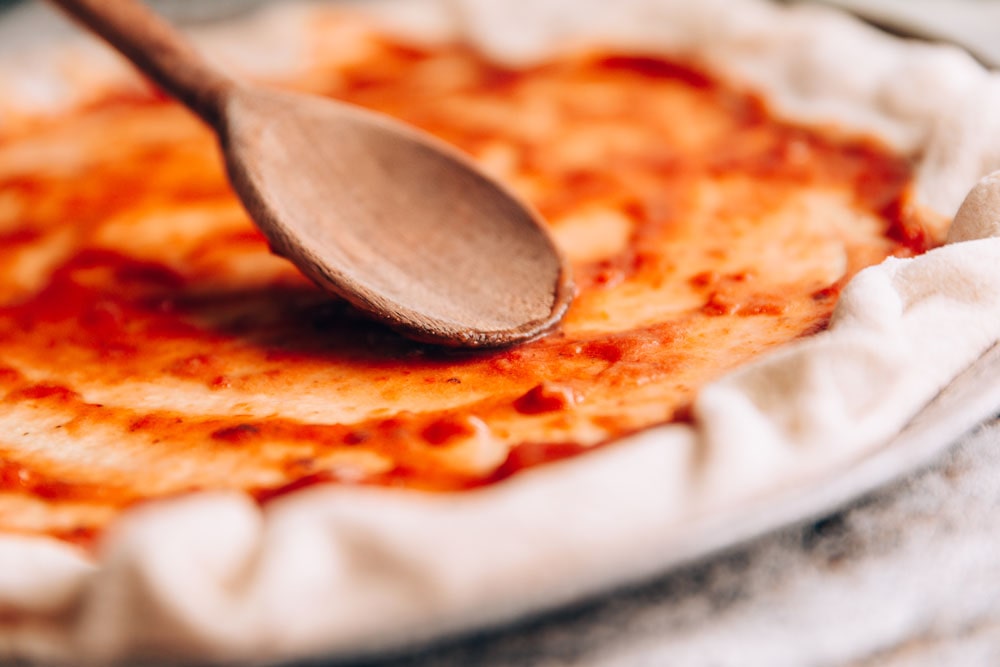- Wood-work surfaces for pizzerias should not be washed in the conventional way, advises Tom “The Dough Doctor” Lehmann.
- Keep in mind that any water applied to the surface should be removed as quickly as possible to keep it from getting absorbed into the wood.
Related: How to achieve the perfect dough mix
Q: We open our dough balls on a wood surface. But after we wash it, the surface gets rough and needs to be sanded out. Can you offer some advice?
A: Wood work surfaces should not be washed in the conventional way. Doing so allows the wood to absorb water, resulting in the raising of the wood grain and, hence, the roughness you are experiencing. The best way to maintain your wood surface is to clean it regularly using a metal-blade bench scraper. It should be held at about a 25° angle when scraping the surface. This allows the scraper’s square edge to effectively remove any stuck-on material from the surface while at the same time removing any errant wood fibers. yields a very smooth surface over time.
When the surface must be washed, remember that any water applied to the surface should be removed as quickly as possible. You want to prevent any water from being absorbed into the wood. The best way to do this is to apply warm water to the surface and immediately scrub it with a plastic scrubbing pad or plastic bristly scrubbing brush (a pot brush works well in this application). Then, using your bench scraper, scrape the surface—with the grain, never against it—to remove the water and debris from the surface. The bench scraper will act something like a squeegee in removing the water, while the square edge of the blade will effectively remove any material that’s sticking to the wood.
After thoroughly scraping, wipe off any water and buff off the surface using a clean, damp towel (turning frequently), then wipe it dry using a clean, dry towel. Allow the surface to air-dry for a few minutes and apply a coat of mineral oil to the wood to seal it. It might take several applications if the wood hasn’t been sealed recently. In that case, apply the oil and allow it to soak in, then apply again as needed until the oil begins to puddle on the surface. After an hour, wipe off any remaining oil and buff the surface using a clean towel. The bench is now ready for use.
You might want to do this at night before you leave the shop so the oil has a chance to thoroughly soak into the wood overnight; then after a quick wipe with a clean towel in the morning, the surface will again be ready to use.
For daily cleaning, first scrape the surface, then apply some hot water and scrape it once again. Wipe off any residual water and finish with a light application of mineral oil rubbed into the wood. The deeper cleaning procedure as outlined above generally only needs to be done once a week.
Note: If you use the bench scraper incorrectly, a beautiful wood bench top can literally be destroyed or left in a condition where only complete resurfacing will restore it to working condition. A new bench scraper has an edge that’s perfectly perpendicular to the sides of the blade—that’s right, the edge is square, not beveled like a knife, and the ends of the blade are rounded to prevent gouging the wood. With use, the blade becomes dull, actually rounded in shape as the square corners are worn off. This results in the need to apply additional force to the scraper to get it to perform properly, and that’s where the trouble begins. There is a distinct probability that the wood will be gouged as you keep adjusting the angle at which it is held trying to get it to work.
Instead, just re-sharpen the blade, but be sure to put a square edge on the blade, not a tapered knife-like edge. The easiest way is to use a long, fine-cut file laid on a flat surface, then hold the scraper perpendicular to the file and pass the scraper over the cutting edges of the file several times to re-establish the square edge. Wipe off the blade to remove any metal particles, then wash and sanitize and you’re good to go. Do this procedure once a week or as needed to keep the bench scraper performing as it should.
With time, you will find that the rounded corners of the scraper blade will become more pointed/squared. When this starts happening, just make several strokes with the file over each corner in such a manner as to maintain the rounded profile. Now you know the secret to keeping your wood work surface in top condition and maintaining your bench scrapers as they were designed to be.
Before he passed in December 2020, Tom Lehmann was a longtime contributor to PMQ Pizza Magazine and served as the director of bakery assistance for the American Institute of Baking.

